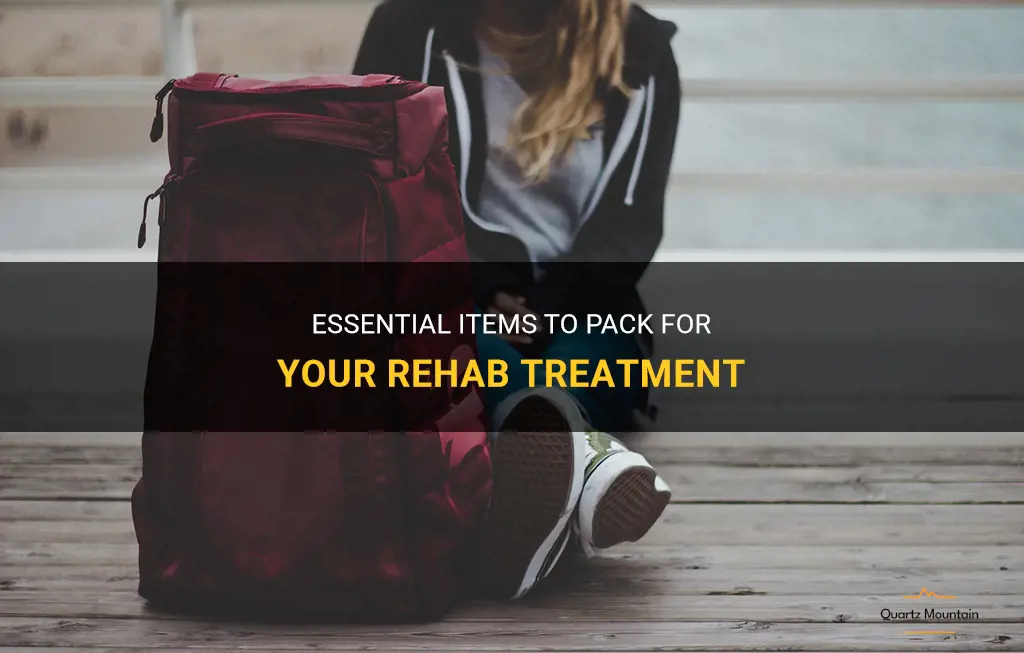
Going into rehab is a courageous and transformative decision, and one that requires careful preparation and planning. While many aspects of your rehab treatment will be taken care of by the facility, there are essential items that you should bring to make your stay as comfortable and productive as possible. In this guide, we will explore the essential items that you should pack for your rehab treatment, ensuring that you have everything you need to focus on your recovery journey.
What You'll Learn
- What essential personal items should be packed for a rehabilitation treatment program?
- Are there any restrictions on items that can be brought to rehab, such as electronics or certain medications?
- Should specific clothing items or weather-appropriate gear be included in the packing list for rehab treatment?
- Are there any personal care items that should be brought, such as toiletries or medications?
- What documents or paperwork should be packed for a rehabilitation treatment program, such as insurance information or identification?

What essential personal items should be packed for a rehabilitation treatment program?
When entering a rehabilitation treatment program, it is important to have certain essential personal items packed to ensure a smooth and comfortable stay. These items can help individuals feel more at ease during their time in treatment and can also aid in the recovery process. Here are some essential personal items that should be packed for a rehabilitation treatment program:
- Comfortable Clothing: It is important to pack comfortable clothing that allows for easy movement and promotes relaxation. Loose-fitting shirts, pants, and sleepwear are ideal for a rehabilitation program. It is also a good idea to pack enough clothing for the duration of the program, as laundry facilities may not always be easily accessible.
- Personal Hygiene Products: Packing personal hygiene products is crucial for maintaining cleanliness and personal care during a rehabilitation program. Items such as toothbrushes, toothpaste, shampoo, conditioner, soap, deodorant, and feminine hygiene products should be included. It is advisable to pack travel-sized versions of these items to save space and make them easier to transport.
- Medications: If individuals are on any prescribed medications, it is essential to pack an adequate supply for the entire duration of the treatment program. It is also advisable to bring along a copy of the prescription in case it is needed for reference or if additional medications need to be obtained during the program. It is important to consult with the treatment program beforehand to ensure that all medications are allowed and to inform the staff about any specific medical needs.
- Personal Electronics: While some rehabilitation programs may have restrictions on personal electronics, others may allow individuals to bring items such as laptops, tablets, or smartphones. These devices can be used during downtime for entertainment, staying connected with loved ones, or engaging in therapeutic activities like journaling or educational research. It is important to confirm with the treatment program about their policy on personal electronics before packing them.
- Books or Reading Materials: Many rehabilitation programs encourage individuals to engage in activities that promote personal growth and self-reflection. Packing books or reading materials that align with these goals can be beneficial during downtime. Whether it is self-help books, inspirational novels, or educational materials, having something to read can provide mental stimulation and serve as a positive distraction during the recovery process.
- Family Photos or Personal Mementos: Bringing along photos of loved ones or personal mementos can provide a sense of comfort and motivation during a rehabilitation program. These items can serve as reminders of the support system outside of the treatment facility and can help individuals stay focused on their recovery goals. Having familiar and cherished items can provide a sense of home and stability during a potentially challenging time.
- Workout Clothes and Equipment: Many rehabilitation programs incorporate physical fitness activities as part of the recovery process. It is important to pack workout clothes and any necessary equipment to participate in these activities. This can include items such as athletic shoes, comfortable exercise attire, yoga mats, resistance bands, or any other equipment recommended by the program.
- Stationery and Writing Materials: Writing can be a therapeutic activity that allows individuals to express their thoughts and emotions. Packing stationery, pens, and notebooks can provide an outlet for self-reflection and personal growth. Journaling can be a valuable tool during the recovery process, allowing individuals to track their progress, set goals, and process their feelings and experiences.
When packing for a rehabilitation treatment program, it is important to consider the specific guidelines and policies of the program. Some facilities may have restrictions on certain items or may provide a list of recommended items to bring. Consulting with the program beforehand can help ensure that individuals have everything they need for a successful and comfortable stay.
Essential Items to Pack for a Vanderbilt Summer Program
You may want to see also

Are there any restrictions on items that can be brought to rehab, such as electronics or certain medications?
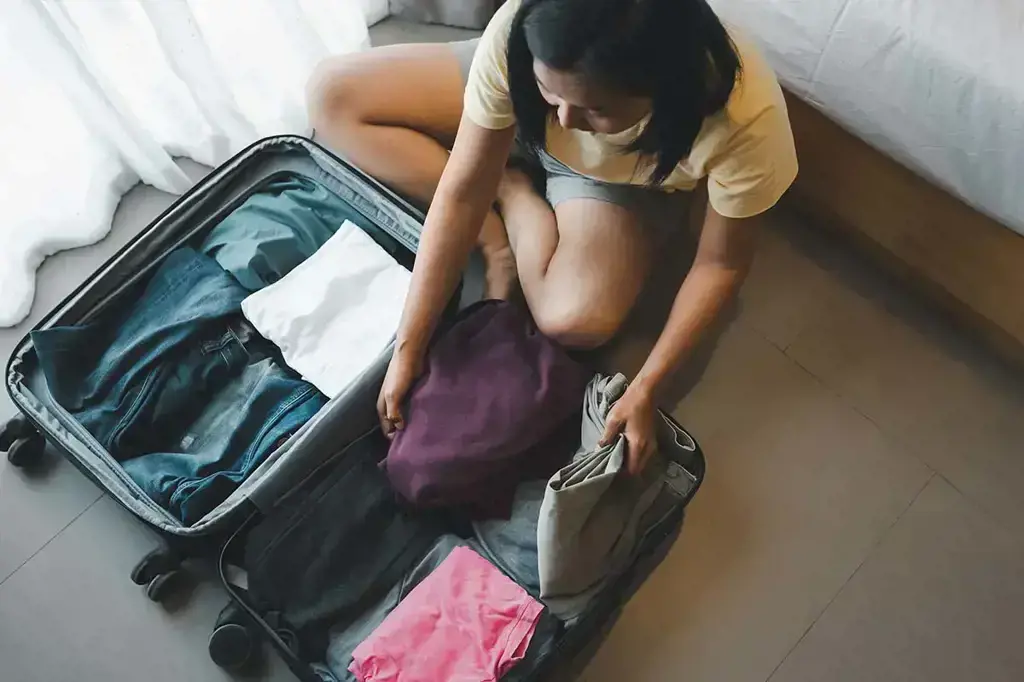
When entering a rehabilitation facility, there are often restrictions on the items that patients can bring with them. These restrictions exist to ensure the safety and effectiveness of the treatment program. Common items that may be restricted include electronics and certain medications. Here's a closer look at why these restrictions are in place and what patients should expect when it comes to bringing personal items to rehab.
Electronics are typically restricted in rehab facilities to create a distraction-free environment. The primary goal of rehab is to help individuals overcome their addiction and focus on their recovery. Electronic devices like smartphones, tablets, and laptops can serve as distractions and disrupt the therapeutic process. By limiting access to electronics, patients are encouraged to fully engage in therapy, build healthy relationships with others in the program, and learn healthy coping mechanisms.
In some cases, limited access to telephones or computers may be provided for patients to make important calls or utilize necessary resources. However, these will usually be monitored to prevent misuse or potential contact with negative influences.
Medication restrictions can vary depending on the type of rehab program and the individual's specific needs. In general, medications that are not directly related to the treatment of the addiction may be restricted in order to minimize potential drug interactions and complications. However, patients will usually be allowed to bring necessary medications that are prescribed by their healthcare provider, such as medications for chronic conditions or mental health disorders.
It's important for individuals entering rehab to communicate with the facility about their medication needs during the intake process. This allows the rehab staff to ensure that the necessary medications are available and to make any necessary adjustments to the treatment plan.
For individuals who need to bring medications to rehab, it's important to follow certain guidelines to ensure safety and compliance. Medications should be in their original packaging and clearly labeled with the patient's name, the name of the medication, dosage instructions, and the prescribing healthcare provider's information. It's also important to inform the rehab staff about any allergies or sensitivities to medications.
In addition to restrictions on electronics and certain medications, there may also be limitations on personal items that could be potentially triggering or harmful. For example, items related to drug or alcohol use, such as paraphernalia or provocative clothing, may not be allowed in the facility. Restrictions on personal items are put in place to create a safe and supportive environment for recovery.
In conclusion, there are often restrictions on the items that can be brought to rehab facilities. Electronics like smartphones and laptops are typically restricted to create a distraction-free environment. Medications that are not directly related to the addiction may also be restricted to minimize potential drug interactions. It's important for individuals entering rehab to communicate with the facility about their medication needs and to follow guidelines for bringing medications. Furthermore, there may be limitations on personal items that could be triggering or harmful. These restrictions are in place to ensure the safety and effectiveness of the treatment program.
Essential Items to Pack for Pumping at Work: A Comprehensive Guide
You may want to see also

Should specific clothing items or weather-appropriate gear be included in the packing list for rehab treatment?
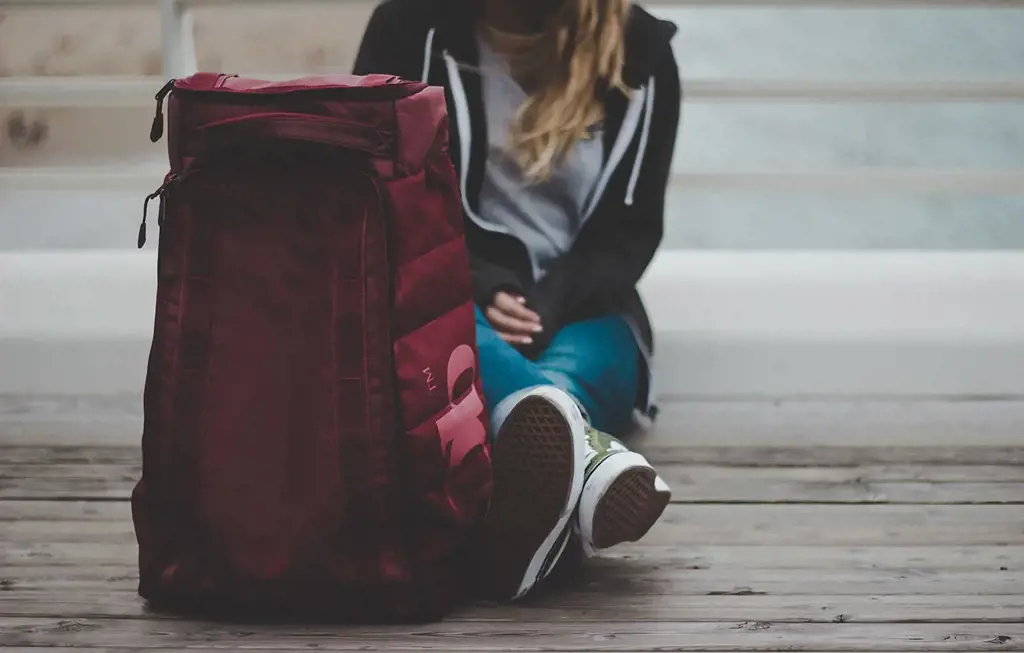
When considering what to pack for rehab treatment, it is important to include specific clothing items and weather-appropriate gear. These items can greatly enhance the overall experience and ensure that patients are comfortable and prepared for any activities or weather conditions that may arise during their treatment. This article will discuss why specific clothing items and weather-appropriate gear should be included in the packing list for rehab treatment, as well as provide a step-by-step guide on what to pack.
Including specific clothing items in the packing list for rehab treatment is essential for a variety of reasons. Firstly, certain clothing items can provide comfort and practicality during treatment. For example, loose-fitting and breathable clothes may be more comfortable during exercise and therapy sessions. Additionally, it may be beneficial to pack items such as sports bras or supportive sneakers for any physical activities that may be part of the treatment program.
It is also important to consider the weather conditions of the location where the rehab treatment is taking place. If the treatment facility is in a colder climate, it is important to pack warm clothing items such as sweaters, jackets, and hats to stay comfortable during outdoor activities. Conversely, if the facility is in a warmer climate, packing lightweight and breathable clothing items such as shorts, t-shirts, and sandals will be more appropriate. Being prepared for the weather can greatly enhance the overall experience and ensure that patients are comfortable throughout their treatment.
To help guide patients in packing the appropriate clothing items and weather-appropriate gear, here is a step-by-step guide:
- Check the weather forecast for the duration of the treatment program. This will give you an idea of what kind of weather conditions to expect and what clothing items to pack.
- Pack a variety of clothing options, including both casual and exercise attire. This will ensure that you have appropriate clothing for all activities and occasions during your treatment.
- Consider the specific activities that may be part of the treatment program. If physical exercise is included, pack supportive workout clothes and shoes to ensure comfort and safety during these activities.
- Don't forget about the essentials such as underwear, socks, and sleepwear. It is important to pack enough of these items to last the duration of your treatment.
- If you are unsure about what specific clothing items and gear to pack, reach out to the treatment facility for guidance. They may have specific recommendations based on the activities and weather conditions of the location.
In addition to the step-by-step guide, it is helpful to provide examples of specific clothing items and weather-appropriate gear that should be included in the packing list for rehab treatment. Here are some examples:
- Comfortable and loose-fitting clothing for therapy sessions and relaxation activities.
- Supportive sneakers for exercise activities.
- Raincoat or umbrella for rainy weather.
- Sweaters and jackets for colder climates.
- Hats, sunglasses, and sunscreen for hot and sunny weather.
- Swimsuit for facilities with swimming pools or water therapy programs.
In conclusion, including specific clothing items and weather-appropriate gear in the packing list for rehab treatment is essential for a comfortable and successful experience. By considering the activities and weather conditions of the treatment program, patients can ensure that they are prepared for any situation and can focus on their recovery without any discomfort or distractions.
The Ultimate Packing Guide for Your Key West Vacation
You may want to see also

Are there any personal care items that should be brought, such as toiletries or medications?
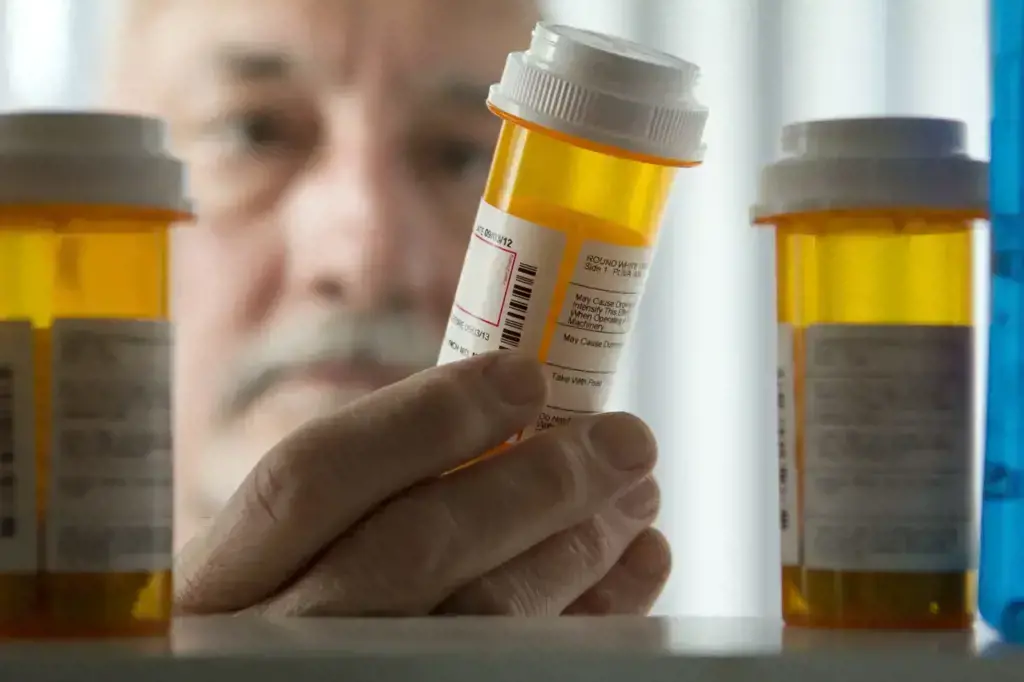
When going on a trip or vacation, it's important to pack the necessary personal care items to ensure you have everything you need during your travels. This includes toiletries and medications that are essential for your overall wellbeing and comfort. Here are some of the key personal care items that you should consider bringing with you on your trip:
Toiletries:
- Toothbrush and toothpaste: Maintaining good oral hygiene is important, so make sure to pack your toothbrush and toothpaste. Brushing your teeth twice a day helps remove plaque and prevent cavities and gum disease.
- Shampoo and conditioner: These are essential for keeping your hair clean and manageable. Choose a shampoo and conditioner that suits your hair type and addresses any specific hair concerns you may have, such as dryness or frizz.
- Body wash or soap: To keep your body clean and fresh, pack a body wash or soap that you prefer. Opt for a mild, moisturizing formula that won't strip your skin of its natural oils.
- Deodorant or antiperspirant: To stay fresh all day and combat body odor, bring your preferred deodorant or antiperspirant. Choose one that provides effective sweat and odor protection.
- Moisturizer: A good moisturizer is essential for maintaining healthy skin, particularly if you're going to be in a dry or sunny climate. Look for a moisturizer that suits your skin type and provides adequate hydration.
- Sunscreen: Protecting your skin from the harmful effects of the sun is crucial. Choose a broad-spectrum sunscreen with at least SPF 30 and apply it generously to all exposed areas of your body, including your face, neck, and arms.
Medications:
- Prescription medications: If you take any prescription medications, make sure to bring an adequate supply for the duration of your trip. It's also a good idea to carry a copy of your prescription or a letter from your healthcare provider, especially if you're traveling to a different country.
- Over-the-counter medications: It's always wise to have a few over-the-counter medications on hand for common ailments such as headaches, allergies, or upset stomachs. Examples include pain relievers, antihistamines, and antacids. However, be sure to check the regulations of the country you're visiting, as some over-the-counter medications may be restricted or require a prescription.
- Motion sickness medication: If you're prone to motion sickness, consider bringing some motion sickness medication. Whether you're traveling by plane, boat, or car, this medication can help alleviate symptoms such as nausea and dizziness.
- First aid kit: It's a good idea to have a basic first aid kit with you, which may include items like band-aids, antiseptic wipes, adhesive tape, and an instant cold compress. This way, you'll be prepared for minor injuries or accidents that may occur during your trip.
Remember, when packing toiletries and medications, it's essential to comply with the travel restrictions and regulations of the country you're visiting. Certain products may be prohibited or have quantity limitations, so it's crucial to do your research beforehand.
In conclusion, when traveling, it's essential to bring personal care items such as toiletries and medications to ensure your overall comfort and wellbeing. This includes items like toothbrush and toothpaste, shampoo and conditioner, body wash or soap, deodorant or antiperspirant, moisturizer, sunscreen, as well as prescription and over-the-counter medications. By packing these essentials, you'll be prepared for any personal care needs that may arise during your trip.
Packing Tips: Essential Clothes to Bring for Barcelona in October
You may want to see also

What documents or paperwork should be packed for a rehabilitation treatment program, such as insurance information or identification?
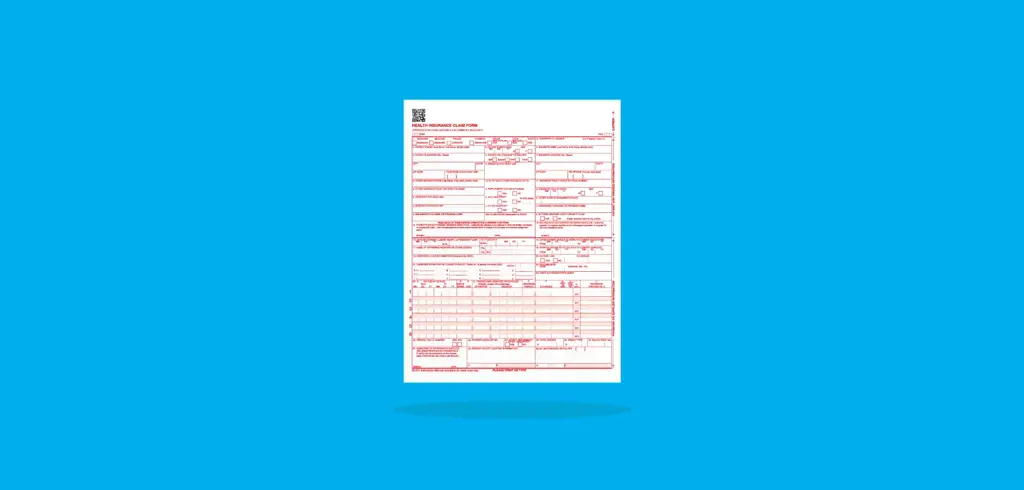
When preparing for a rehabilitation treatment program, there are several important documents and paperwork that should be packed to ensure a smooth and successful experience. These documents are necessary for the facility to properly assess and treat the individual, as well as to handle any necessary administrative tasks. Some of the key documents that should be packed include insurance information, identification, medical records, and any legal documents or paperwork related to the individual's treatment.
Insurance information is crucial when entering a rehabilitation treatment program. The facility will likely need this information to verify coverage and determine the extent of benefits available to the individual. This information may include the name of the insurance provider, policy number, contact information for the insurance company, and any necessary authorization forms. It is important to contact the insurance company before entering the program to confirm coverage and make arrangements if necessary.
Identification documents are also essential for the intake process in a rehabilitation treatment program. These may include a driver's license or state-issued identification card, passport, or any other official identification documents. These documents are used to verify the individual's identity and may be required for certain activities or procedures during their stay in the program.
Medical records are another important set of documents that should be packed for a rehabilitation treatment program. These records can include previous medical diagnoses, treatment history, medication lists, and any relevant test results or laboratory reports. Having these records on hand allows the treatment team to have a comprehensive understanding of the individual's medical history and can aid in developing an effective treatment plan. It is important to obtain copies of these records from previous healthcare providers before entering the program.
In some cases, individuals may have legal documents or paperwork related to their treatment that should be packed. These documents can include court orders mandating treatment, power of attorney forms authorizing medical decisions, or any other legal documents that may be relevant to the individual's treatment. It is important to provide these documents to the facility so they can be aware of any legal obligations or restrictions related to the individual's care.
In addition to these key documents, it may also be beneficial to pack any other relevant paperwork or documentation. This can include a list of emergency contacts, a detailed medical history, a list of current medications and dosages, and any specific treatment preferences or goals. These additional documents can provide valuable information to the treatment team and help ensure that the individual's needs and preferences are met during their stay in the program.
Overall, packing the necessary documents and paperwork for a rehabilitation treatment program is essential for a successful and smooth experience. These documents provide important information to the facility, enable proper assessment and treatment, and facilitate any necessary administrative tasks. By ensuring that all relevant documents are packed and readily accessible, individuals can focus on their recovery without any unnecessary complications.
The Ultimate Packing List for Your Hawaii Vacation
You may want to see also
Frequently asked questions
It is recommended to pack comfortable and practical clothing for rehab treatment. This can include items such as workout clothes, comfortable pajamas, underwear and socks, and a few changes of casual clothing. It is important to check the specific guidelines and regulations of the rehab facility you are attending, as some may have restrictions on certain items of clothing.
Most rehab facilities provide basic toiletries such as shampoo, conditioner, soap, and toilet paper. However, it is a good idea to pack any specific toiletries or personal care items that you prefer to use. This can include items such as toothpaste, toothbrush, deodorant, and any special skincare products or medications.
Many rehab facilities have restrictions on personal electronics due to privacy and distraction concerns. It is recommended to check with the facility beforehand to find out if you are allowed to bring items such as cell phones, laptops, or tablets. In some cases, these items may be allowed but only during specific designated times.
In addition to clothing and toiletries, it is important to pack any necessary medications and medical supplies. It may also be helpful to bring a journal or notebook for writing, any necessary reading materials or self-help books, and any comfort items such as a favorite blanket or stuffed animal. It is always a good idea to check with the rehab facility beforehand to find out if there are any specific items that are prohibited.







